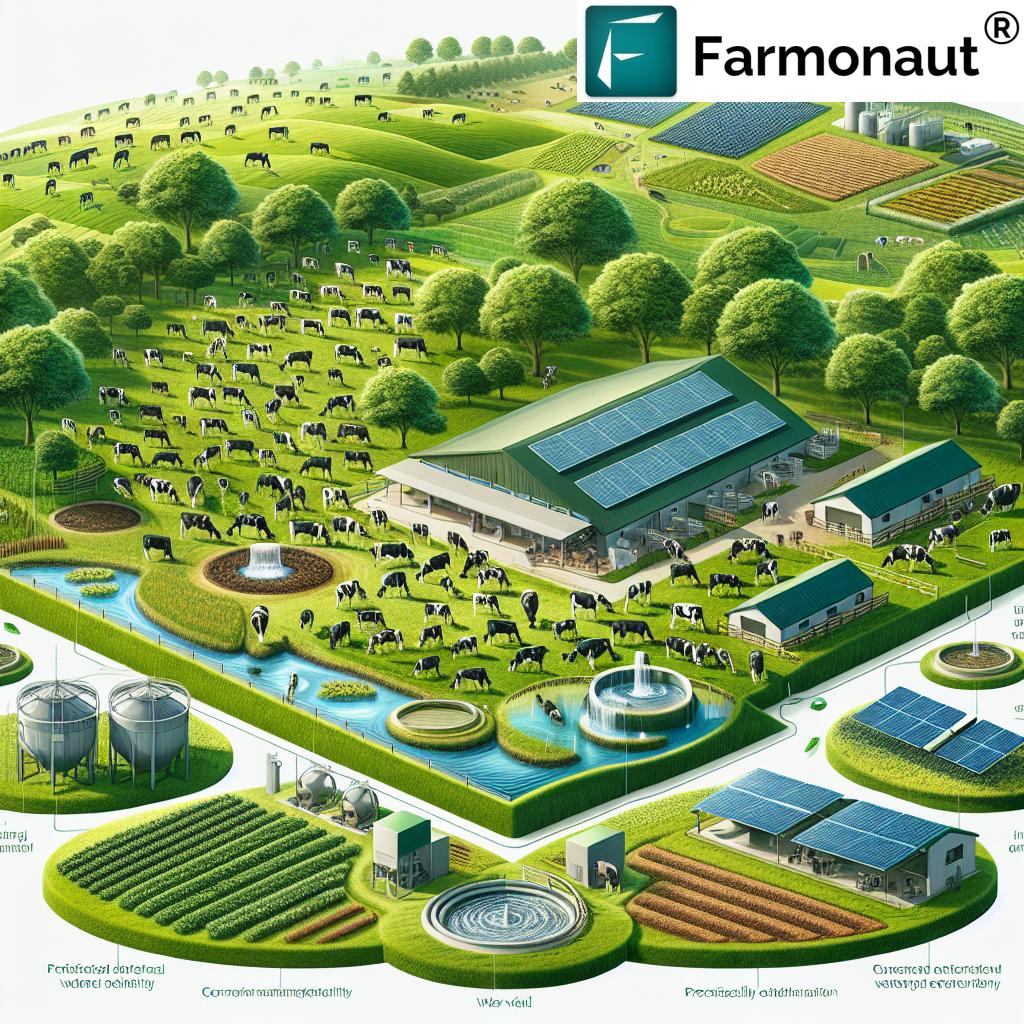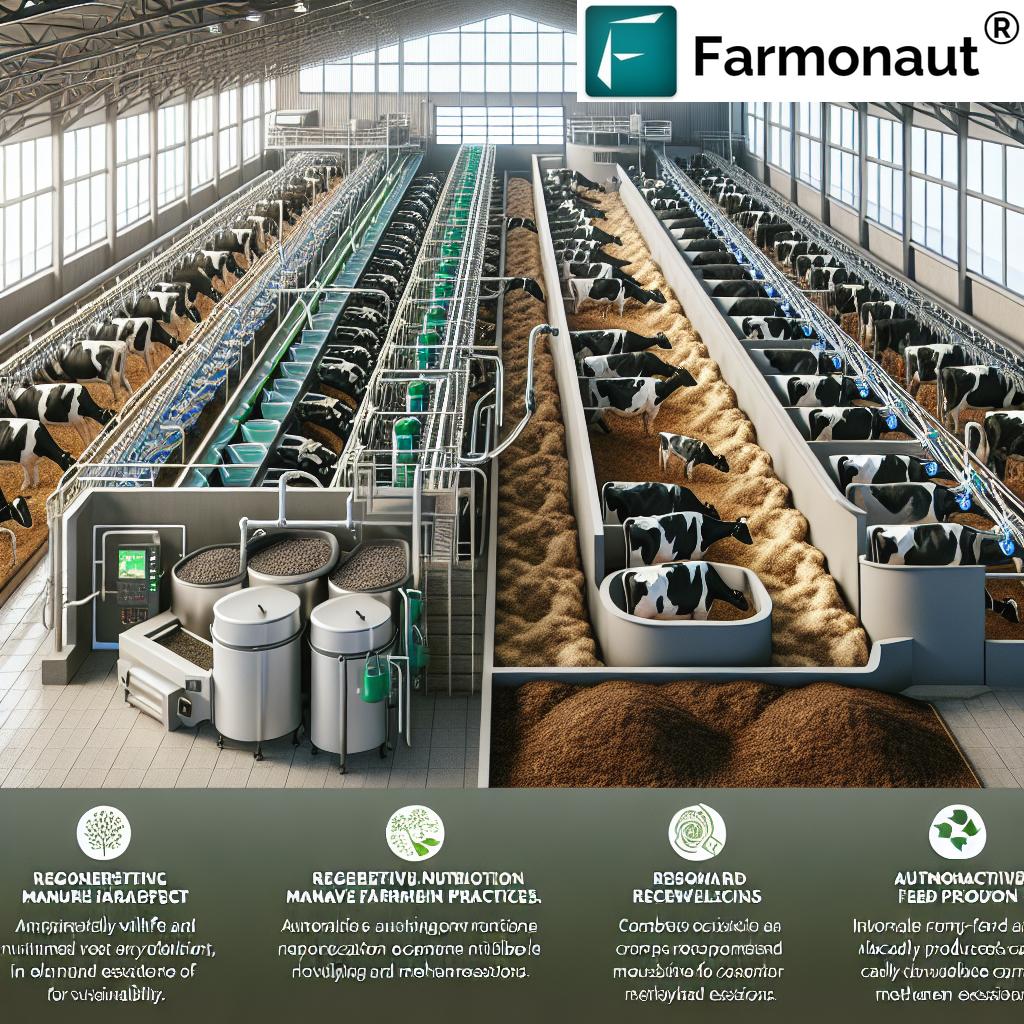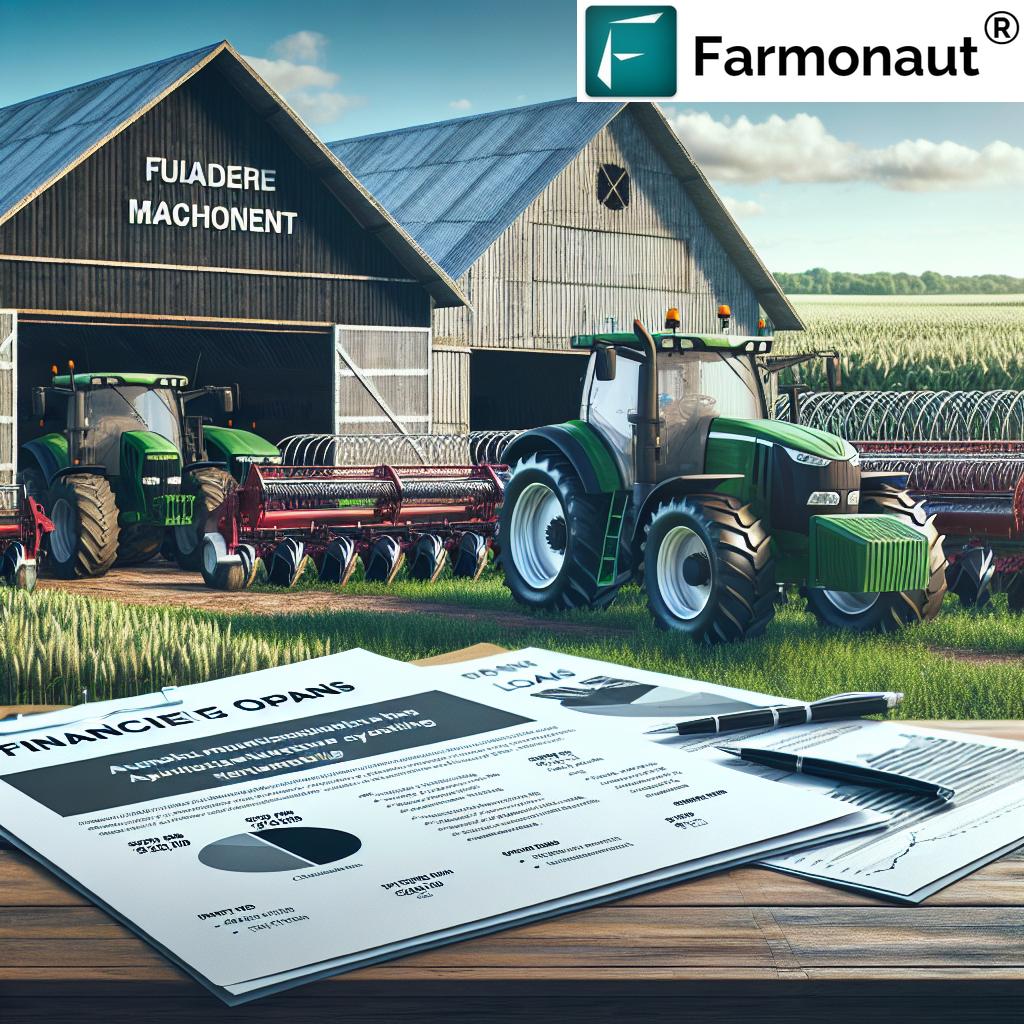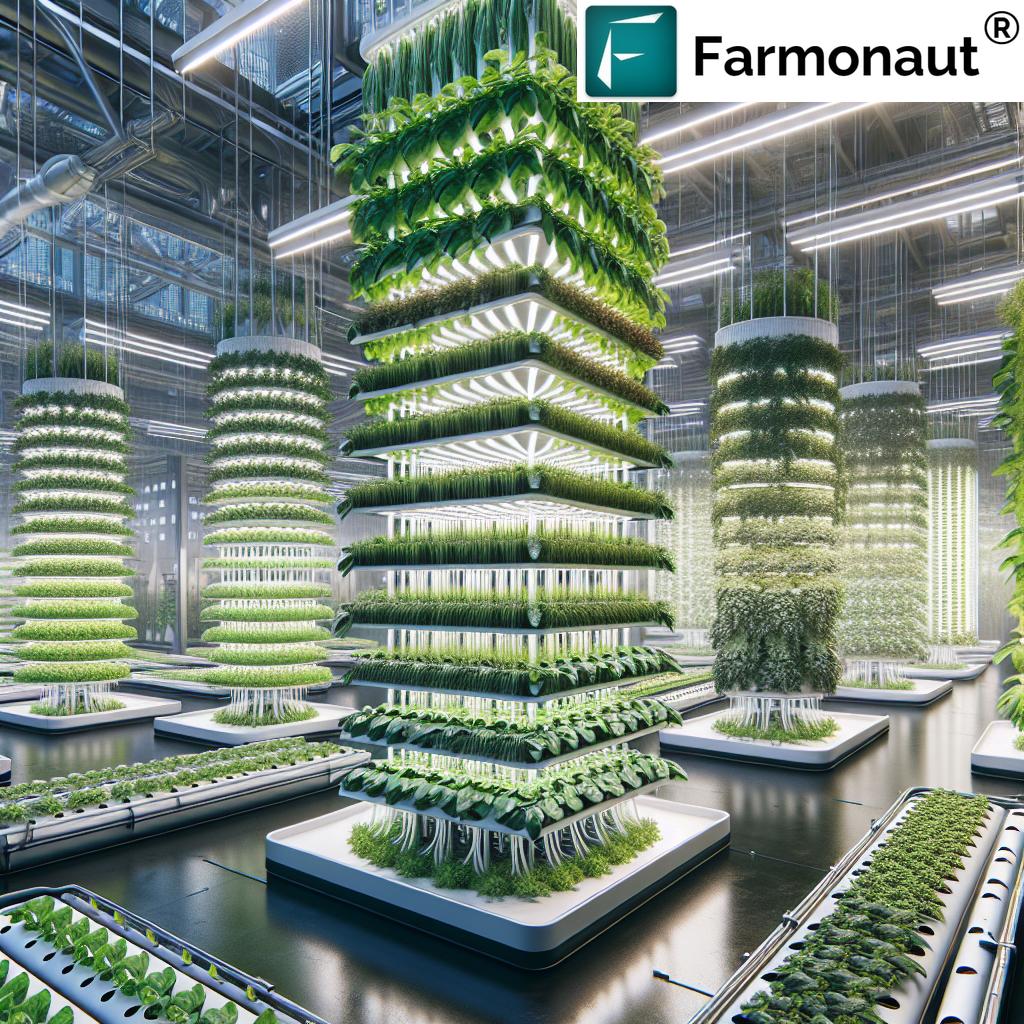Sustainable Dairy Farming: 7 Hacks to Slash Your Impact!
What is Sustainable Dairy Farming? Our Approach to Dairy Farm Environmental Impact
As global demand for milk and dairy products rises, so does our responsibility to minimize the dairy farm environmental impact. Sustainable dairy farming is a holistic approach balancing robust milk production and profitability with environmental stewardship, animal welfare, and community well-being. By addressing concerns such as dairy greenhouse gas emissions, water usage, land degradation, and animal health, we can ensure a more viable and resilient farming future.
In this blog, we’ll dive into the 7 most powerful hacks to slash your impact, delivering actionable insights, comparative impact data, and Farmonaut-powered solutions to help us all embrace sustainability in dairy farming operations.
Environmental Impacts of Traditional Dairy Farming: Challenges & Realities
Traditional dairy farming practices are closely linked to several critical environmental concerns. Quantifying and addressing these impacts is central to ensuring sustainability and the long-term viability of our farms and communities.
1. Greenhouse Gas Emissions: The Dairy Methane Challenge
- Dairy cows naturally produce methane—a potent greenhouse gas—during digestion (enteric fermentation).
- Manure management and feed production add further emissions, especially nitrous oxide and carbon dioxide (CO2).
- Combined, these sources mean dairy farms can significantly contribute to global warming.
- Source: World Wildlife Fund: Dairy & the Environment
2. Water Usage and Pollution: A Critical Resource under Stress
- Dairy farm operations consume significant amounts of water—for hydration of cows, cleaning barn and equipment, and irrigating feed crops.
- Improper manure management can lead to nutrient runoff and pollution; this causes eutrophication of aquatic ecosystems, threatening biodiversity and community water safety.
- Source: World Wildlife Fund: Dairy & the Environment
3. Land Use, Grazing & Deforestation: Causes of Biodiversity Loss
- Expanding grazing lands and cultivating more feed crops often results in deforestation and loss of natural habitats.
- The resulting soil degradation, loss of biodiversity, and ecosystem disruption directly counter the principles of sustainability in agriculture.
- Source: World Wildlife Fund: Dairy & the Environment
Principles of Sustainable Dairy Farming: The Foundation of Positive Change
To genuinely reduce environmental impacts and ensure sustainability, sustainable dairy farming incorporates several key principles:
- Efficient Resource Management: Implementing systems that optimize water, energy, and feed use to minimize waste, cost, and impact.
- Animal Welfare: Ensuring the health, nutrition, and welfare of animals through proper nutrition, housing, and basic veterinary healthcare.
- Economic Viability: Adopting profitable practices that increase farm resilience and enhance income stability for farming communities.
- Environmental Stewardship: Protecting and enhancing natural resources (land, water, air) by thoughtful conservation, waste management, and responsible care.
7 Sustainable Dairy Farming Hacks to Slash Your Impact
Ready to transition to sustainable dairy farming? Here are seven actionable hacks—from water management in dairy farming to renewable energy in dairy farms—that directly reduce pollution, emissions, and resource usage while boosting farm profitability and animal welfare.
-
1. Precision Dairy Farming Technologies
We can dramatically improve resource use and reduce our footprint with precision dairy farming technologies. Solutions like satellite crop health monitoring, automated milking systems, and data-driven herd management help us:
- Efficiently optimize feed rations, reducing overfeeding and methane from digestion.
- Monitor cow health to avoid unnecessary loss and treatment, ensuring animal welfare.
- Target irrigation and fertilizer only where needed, using less water and minimizing runoff.
- Learn more about precise farm monitoring with Farmonaut’s Large Scale Farm Management App, which enables efficient operations and better yields on big or small dairy farms.
-
2. Advanced Manure Management for Sustainability
The way we handle animal manure can make or break our environmental profile. By using anaerobic digesters and modern containment, we:
- Capture methane from manure ponds/barns—generating biogas, which we can use to create renewable energy.
- Reduce farm methane emissions and odor, while providing a sustainable form of heat/electricity.
- Produce nutrient-rich fertilizer with less environmental risk.
- Explore carbon footprinting by Farmonaut to track and minimize methane and CO2 from manure and farm activities.
-
3. Feed Optimization and Methane-Reducing Additives
By adjusting cow diets and using selected feed additives (e.g., certain oils, seaweed, enzymes), we can:
- Reduce the methane produced during digestion in cows’ rumens.
- Increase milk yield from the same (or less) feed, boosting farm profitability.
-
4. Water Recycling and Conservation Systems
Water-saving technologies not only reduce bills but also ease pressure on local supplies. We can recycle water used in cooling, cleaning, and irrigation, and switch to precision irrigation for feed crops. This approach:
- Lowers total water usage and pollution risk.
- Ensures sustainability in water management in dairy farming.
- Did you know? Adopting water-saving techniques can reduce dairy farm water use by up to 30%.
-
5. Renewable Energy Integration
Installing solar panels, wind turbines, or even using on-farm biogas means lower fossil fuel usage and a smaller carbon footprint. This hack:
- Directly reduces dairy greenhouse gas emissions from farm operations.
- Turns waste into value by generating on-site, clean energy for milking, chilling, and fleet management. (See Farmonaut’s fleet optimization for smarter logistics — helps save fuel and cut costs).
-
6. Regenerative Dairy Farming Practices
By adopting regenerative dairy farming practices such as rotational grazing, cover cropping, and reducing tillage, we can:
- Rebuild soil organic matter and raise soil health for better pasture and forage quality.
- Improve carbon sequestration, capture nitrogen, and foster biodiversity.
- Monitor regenerative gains with Farmonaut’s app for soil/plant health insights.
-
7. Blockchain-Based Traceability for Sustainability
Implementing traceability with blockchain ensures that every stage of dairy production—from feed and water to product shipment—is securely tracked and transparent, helping us:
- Address sustainability, fraud, and responsible sourcing concerns.
- Meet consumer and regulatory demand for supply chain transparency.
- See Farmonaut’s product traceability solution to discover traceable, responsible dairy production in action.
Comparative Impact Table: Sustainable Dairy Farming Hacks vs Conventional Practices
We know data matters. That’s why we’ve summarized the estimated benefits of these 7 sustainable hacks, directly comparing them to conventional practices and making it easy for you to judge real-world impacts:
| Farming Practice/Hack | GHG Emissions Reduction (%) | Water Usage Reduction (%) | Additional Environmental Benefits |
|---|---|---|---|
| Precision Dairy Farming Technologies | 8–12% | 15–22% | Efficient input use, improved animal welfare, reduced nutrient runoff |
| Advanced Manure Management (Anaerobic Digestion) | 12–20% | 10–15% | Biogas production, odor reduction, soil fertilization |
| Feed Optimization & Methane-Reducing Additives | 6–15% | — | Reduced methane from digestion, higher productivity, healthier cows |
| Water Recycling and Conservation Systems | 3–5% | 20–30% | Lowers pollution risk, resilience to drought, protects local ecosystems |
| Renewable Energy Integration | 10–18% | 4–7% | Reduced fossil fuel use, improves energy autonomy, boosts reputation |
| Regenerative Dairy Farming Practices | 7–15% | 8–10% | Enhanced soil and biodiversity, carbon sequestration, better forage |
| Blockchain Traceability | 2–4% | — | Ensures responsible sourcing, transparency, better management |
Water Management in Dairy Farming: Conserving Every Drop
Effective water management in dairy farming is paramount, as dairy production can be intensely water-dependent. Let’s explore best practices that help us reduce usage, optimize hydration, and limit runoff.
- Install water recycling systems: Recycle cooling, cleaning, and wash water. This reduces both resource use and effluent volumes.
- Adopt precision irrigation: Utilize soil moisture monitoring (Farmonaut offers satellite-based moisture insights!) to water fields only when and where necessary.
- Prevent nutrient runoff: Carefully align manure and fertilizer application with plant needs to avoid excess entering waterways.
- Use flow restrictors and leak detection in barns and parlors, avoiding unnecessary losses.
- Reclaim rainwater for cleaning, irrigation, or livestock, further reducing reliance on municipal or groundwater sources.
Learn more about Farmonaut’s carbon, water, and environmental impact tracking for real-time, actionable insights.
Precision Dairy Farming Technologies: Redefining Sustainability
Precision farming significantly enhances efficiency and lowers our dairy farm’s environmental impact:
- Farmonaut’s satellite-driven health monitoring empowers us to spot disease/pest issues early, target interventions, and avoid blanket pesticide/fertilizer use.
- Precision feeding minimizes waste and emissions by customizing rations based on milk production and cow health data.
- Smarter scheduling and automation in milking parlors cut down water and energy use while minimizing stress for cows.
For developers or businesses: Check out Farmonaut’s API access and developer docs to integrate powerful monitoring into your own tech stack!
Animal Welfare in Dairy Production: The Heart of Sustainable Progress
Ensuring animal welfare in dairy production is both an ethical imperative and key to long-term farm success. Here’s how:
- Comfortable, well-ventilated housing improves cow health and milk yield.
- Proper nutrition, regular veterinary care, and access to clean water ensure animals remain healthy and productive.
- Rotational or regenerative grazing protects pastures, supports biodiversity, and lets cows express natural behaviors.
Switching to sustainable, animal-friendly methods doesn’t just feel right—it pays off in higher-quality milk and improved farm viability.
How Farmonaut Empowers Sustainable Dairy Farming
Farmonaut is revolutionizing how we approach sustainable dairy farming by providing affordable, advanced technology and data-driven insight—accessible via web, mobile, or direct API.
Key Farmonaut Benefits for Dairy Farmers:
-
Satellite-Based Crop and Pasture Monitoring:
- Real-time alerts for crop stress, disease, or under-performing fields—leads to targeted intervention and reduced waste.
- Track soil health and pasture quality for better cow nutrition.
-
Jeevn AI Advisory System:
- Get instant, personalized advice on weather, irrigation, nutrient planning, and harvest timing.
- Improve decision-making and reduce unnecessary resource use.
-
Blockchain Traceability:
- Track every part of your dairy supply chain for authenticity and sustainability.
- Demonstrate environmental stewardship to consumers and buyers.
-
Fleet and Resource Management:
- Optimize milk transport and feed delivery to reduce fuel use and emissions.
-
Carbon Footprint Monitoring:
- Quantify and reduce emissions from your farm with powerful, easy-to-read tracking.
Try Farmonaut’s full suite of dairy solutions on Web or Mobile App—empowering farms to thrive both economically and sustainably!
Challenges & Considerations in Adopting Sustainable Dairy Farming
While the sustainable dairy farming approach delivers lasting benefits, transitioning isn’t always easy. Here’s what we must honestly assess and tackle together:
- Economic constraints: Initial investment in precision farming tech, digesters, renewable energy, or improved housing can be high, especially for small/medium farms.
- Regulatory uncertainty: Inconsistent or unclear environmental policies can complicate planning and discourage up-front investment.
- Balancing productivity and sustainability: It’s essential that new hacks and practices don’t reduce milk output or farm profitability—otherwise sustainability won’t be truly viable.
- Skill, awareness & data gaps: Adopting new systems (e.g., data-driven farm management, blockchain, or carbon monitoring) requires accessible tools, training, and advisory services.
- Consumer market recognition: For some sustainable investments to pay off, buyers must value and pay a premium for eco-friendly dairy products.
With ongoing innovation, accessible tools like Farmonaut, and supportive policies, we can together overcome these challenges and ensure the future of sustainable dairy farming stays bright!
Frequently Asked Questions (FAQ): Sustainable Dairy Farming
What is sustainable dairy farming?
Sustainable dairy farming is an approach balancing milk production with environmental stewardship, economic viability, and social responsibility. It incorporates efficient resource management, animal welfare, and farm-community prosperity, emphasizing reduced greenhouse gas emissions, water conservation, and innovative solutions like precision agriculture.
How does dairy farming contribute to greenhouse gas emissions?
Dairy cows emit methane through digestion. Additionally, manure management and feed production release methane, nitrous oxide, and carbon dioxide. All these contribute to the sector’s carbon footprint.
How can I reduce water usage on my dairy farm?
Use water recycling/reuse systems, adopt precision irrigation, address leaks, and recycle water from cleaning/cooling. These strategies can reduce total use by 20–30%.
What is regenerative dairy farming?
Regenerative dairy farming practices include rotational grazing, cover cropping, minimizing soil disturbance, and integrated pastures/crop management. These restore soil health, increase carbon sequestration, and boost biodiversity.
Is Farmonaut a marketplace or a regulatory body?
No, Farmonaut isn’t a marketplace, machinery seller, or regulatory body. It is an agricultural technology company empowering farmers with satellite monitoring, resource management, AI advice, and sustainability tracking.
Where can I learn more or try Farmonaut’s sustainable farming solutions?
Get started with Farmonaut’s web or mobile apps for satellite-based monitoring, advisory, traceability, and environmental tracking. Or check the API documentation for integration!
Conclusion: Creating Lasting Value with Sustainable Dairy Farming
Sustainable dairy farming is not just a trend—it’s our roadmap for reducing environmental impact, ensuring farm viability, and contributing to global efforts for a safer, healthier planet.
By adopting hacks like precision dairy farming technologies, smart manure management, feed optimization, water recycling, renewable energy, regenerative practices, and reliable traceability, we unlock true sustainability without sacrificing yield or profitability.
Tools like Farmonaut’s affordable, data-driven solutions bring advanced monitoring, AI advice, and transparency to every farm—big or small. Now is the time to unite for responsible growth, protect our resources, and ensure both cows and communities thrive for decades to come. Let’s build a sustainable dairy future—one smart decision at a time!















